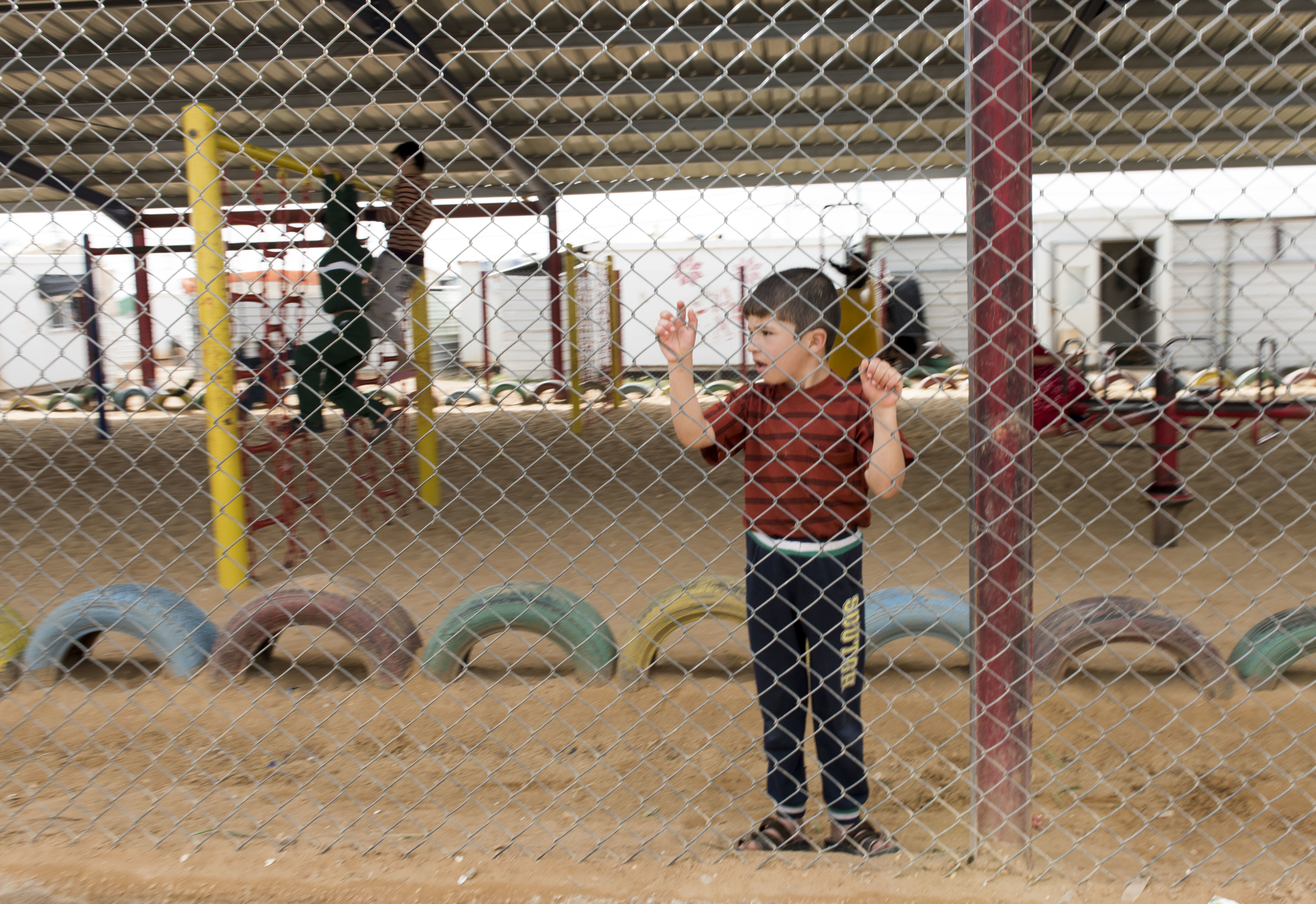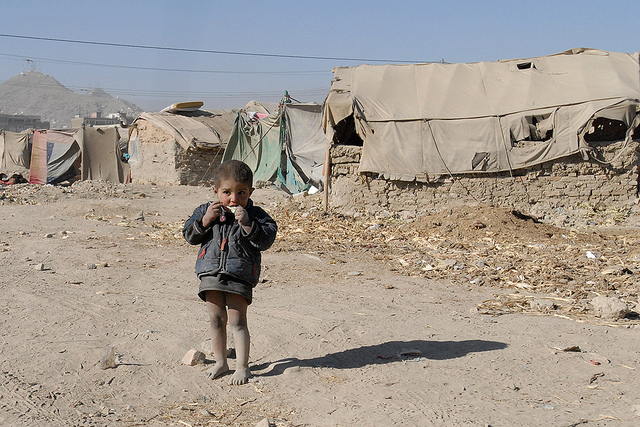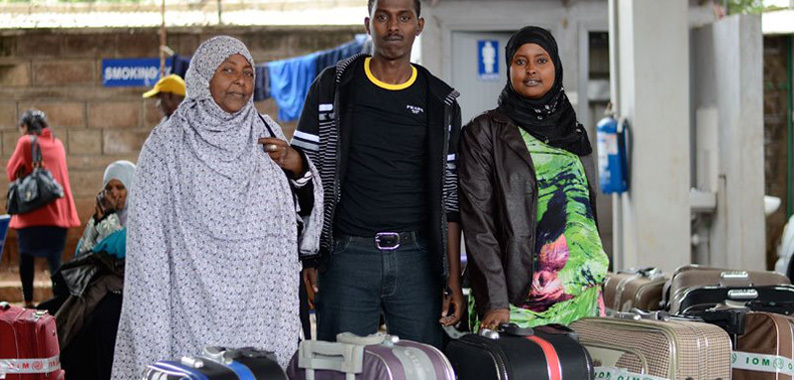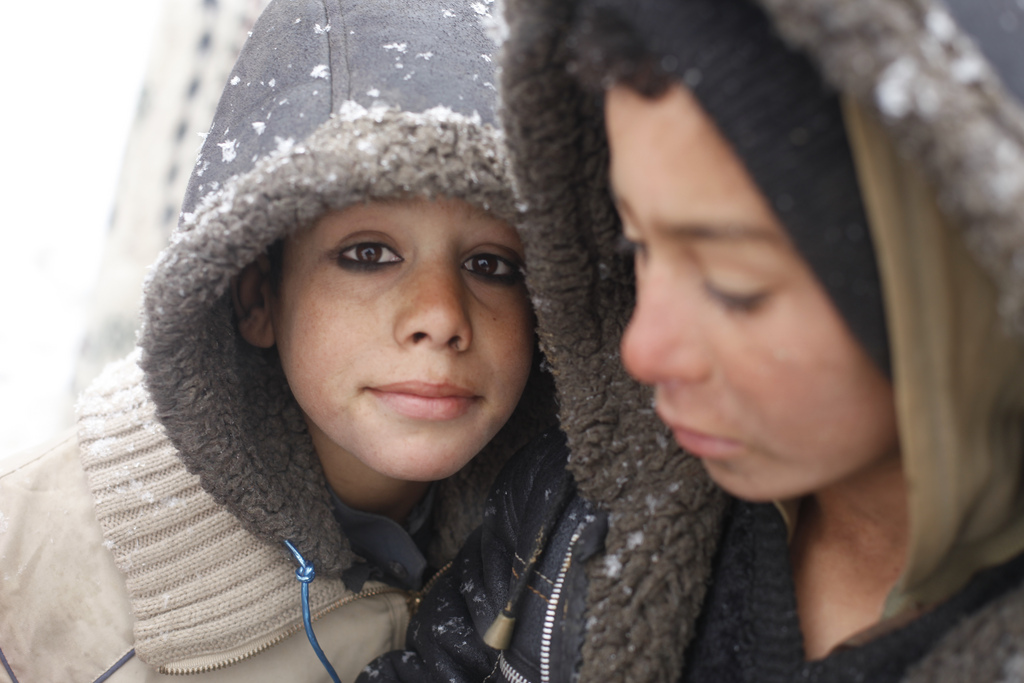The shores of Southern Europe are no stranger to asylum seekers. With hands tied, fugitives are forced to walk the plank and dive into the abyss of uncertainty – hoping to be caught by a foreigner’s net. The refugee crisis arises as a failure of this net; too thin, and too narrow to sustain a widening scope. The increasing influx of asylum seekers has compelled the rest of Europe to extend the net, and thus a patchwork of legislation is extended to cope with increasing demands.
Faced with a refugee crisis which encompasses a humanitarian struggle of integration between cultures and ethnicity, the UN has found ground to pursue Sustainable Development Goal 16: achieving peaceful and inclusive societies, access to justice for all and effective and accountable institutions. Building on the prospect that peace, justice and strong institutions can symbiotically energize one another, legislation for the protection of asylum seekers ushers the global situation towards a more inclusive and respectful era.
An awakening?
In 2014, worldwide, there was a 54.3 percent increase of asylum seekers with pending applications to receive refugee status, and a 22.9 percent increase of people receiving refugee status. This trend is mirrored in Europe a year later, where between the first quarter of 2015 and the first quarter of 2016, asylum applicants have increased by around 50 percent. The current crisis challenges values of justice, peace and inclusivity from a plethora of angles.
The freedom to live in a peaceful community is a just expectation for mankind to meet as best it can, forming the basis of an essential humanitarian duty: welcoming refugees – for whom this possibility of peace is but debris of a war-torn community. Thus, the European humanitarian project of finding asylum seekers a new home is encompassed by SDG 16, however it targets other aspects of this same goal: inclusivity and effective institutions.
The humanitarian philosophy of UN organizations finds itself at variance with European nation-state governments whose foremost objective is the protection of its own citizens. Welcoming undocumented migrants into the EU is at loggerheads with a growing awareness of the threats of fanaticism and stands in the way of inclusivity. Furthermore, increased resourcefulness and a strong emergency response has been demanded of institutions which have not always been effective with quick and committed responses.
With refugees at their doorstep, Europeans have eventually found foreign crises to be not-so-foreign anymore, provoking renewed degrees of public interest in humanitarian issues and perhaps a collective moral sympathy. The general European public reaction goes hand in hand with that of their institutions, for whom the necessity to revive and revisit refugee legislation is clearly apparent. The immediate past and future bear testament to institutional capability in the same way that they reveal shortcomings in achieving fair justice and inclusive, peaceful societies.
As institutions, the UN and EU strive to fulfill SDG 16 by recognizing the hostile environments war, civil war, dictatorships and totalitarian rule can create, and setting up a mechanism to receive their fleeing victims. With respect to asylum seekers, the goal ideally requires the creation of conditions which allow peaceful living for all people, and the upholding of rights and opportunities which communities enjoy in peacetime.
Thus, the institutions in question fulfill three criteria which are essential to restoring liberty to asylum seekers. The UN outlines in a detailed way the profile which characterizes a displaced person with a right to refugee status. This involves clarification of how persecution and threatened minorities must be understood. The EU has adopted the UN’s ‘definitions’ in its own protocol, and has created a uniform ‘Common European Asylum System’ (CEAS) for dealing with applications in line with the fulfillment of rights as contained in the Geneva convention and Dublin protocol. These formalize the kind of living conditions countries should grant refugees making them rights, which if realized will lead to their integration in a peaceful nation, including all available types of freedom. Individual states thus autonomously take upon themselves responsibility in assimilating refugees in their country.
Photo: A young Afghan refugee eats a piece of candy given to him by an American soldier. Kabul, Afghanistan Photo Credit: Flickr/ Air Force Photo by Staff Sgt. Stacey Haga
Ethical racial profiling
Over 1 million people crossed the Mediterranean into Europe in 2015 seeking safety and peace when these fled their own war-stricken homes. Asylum seekers are fugitives from civil wars and conflicts that render whole lands and countries unlivable due to their transformation into a physical war zone or a political war zone. Over 5 million asylum seekers have fled from conditions of physical war and racial oppression in Palestine, likewise 3.9 million from Syria and 2.6 million for Afghanistan. The destruction of economic, social and physical livelihood is a clear negation of human rights, and thus protection from these conditions is a right in its own good stead. This perspective serves as the axis for the assessment of policy with regards to refugees, and from it is derived the lawful approach towards controlling migration influx; refugee status being a right forced migrants can qualify for.
The dire and strenuous conditions in certain regions form the basis for the UN’s identification of persecution as repeated and cumulative occasions of human rights violations such as mental, physical and sexual abuse or discrimination that occurs through state institutions resulting in unjust punishment or detrimental outcomes.
Under the 1951 Geneva Convention, an asylum seeker can apply for refugee status successfully on the grounds “that if he is returned to his country of origin he has a well-founded fear of persecution on account of race, religion, nationality, political belief or membership of a particular social group.”
Virtually, the passage from ‘asylum seeker’ to ‘refugee’ promises a myriad of rights that constitute the dignified living of any European person. I write of a promise, because although on paper these rights are already ascertained, they cannot be considered fulfilled until the refugee is relocated into a community beyond the fences of the refugee camp.
Related article: “REFUGEES IN EUROPE: THE ANATOMY OF A GLOBAL CRISIS”
The Common European Asylum System regulations emphasize very strongly the gravity of targeted persecution towards certain nationalities, ethnicity, religions, ages and genders, thus the importance of recognizing these in connection to known oppressive movements abroad is crucial to the examination process. A person’s identity is of the highest relevance in deciding their potential safety since it is an indicator of the risk they may be under if refused protection.
Locked In or Out?
Out of 287,100 asylum applicants in Europe in the first quarter in 2016, 60 percent were granted some sort of protection status. Asylum seekers are essentially treated as candidates for refugee status, whose background and motive for unwillingness or inability to live in their country of origin is founded on a legitimate fear of persecution. Their situation is carefully reviewed through interviews with government officials to assess their reason for escaping to Europe, which if deemed valid – and thus the threat of persecution is recognized – merit refugee status. Cases in Europe are assessed in a uniform way according to the CEAS which entails that officials attempt to filter credible accounts in processing applications. The legal time limit for the examination of an application is 12 months, during which asylum seekers can be detained in refugee camps. In light of the 2012 Amnesty International Report detailing how Greek detention camps, for example, were unsanitary, overcrowded and failing to meet certain rights to human treatment – 12 months is far too long a detention period.
The two cornerstones upon which the EU refugee system is built, namely information and control, hit against a hard wall in practice. The expectation of transparent information on the backgrounds and identities of asylum seekers can prove to be unfathomable due to logistic impossibilities; most asylum seekers either will have not been able to access identity documentation before leaving their home country, or that documentation may have been lost or destroyed in the course of their often unconventional travels towards Europe. Therefore, knowledge of their nationality, ethnicity, and family ties, which are sought to determine the type of risk or danger they are escaping from, are impossible to prove. This is why the lack of documentation upon arrival creates uncertainty and suspicious circumstances.
Considering rising xenophobic skepticism, the lack of documentation upon arrival creates a source of uncertainty and suspicion which European citizens can (and do) bring up with their governments. Certainly, the Brexit campaign provides a good example of using these fears to drive the vote. Without material evidence, the interview process is firstly not a guarantee of future protection, and secondly restricts asylum seekers to detention camps until decisions are made.
The unbearable lightness of being in Europe
Refugee status entails rights which are designed to restore peaceful living and justice to asylum seekers. The primary right refugees are owed is that of non-refoulement, meaning States have an obligation not to return a person to “the frontiers of territories where his life or freedom would be threatened on account of his race, religion, nationality, membership of a particular social group or political opinion,” as stated in article 33 of the 1951 Convention relating to the status of refugees.
Refugees also have a right to movement within the region which is clearly constrained by the practice of refugee camps, thus detention must end once refugee status is granted. Taking a broader perspective and accounting for longer term integration, the 1951 Convention grants refugees the same rights as nationals of the host country with regards to access to court (article 16), and the same rights as foreign nationals with respect to employment (article 17) and property (article 13).
By International Law, all these rights should be fulfilled for those with refugee status. However, the picture becomes vastly bleaker as processing centers struggle to sift through the influx of migrants. It would be more accurate to describe processing centers as detention centers due to the incredibly long periods of time asylum seekers forcibly inhabit them for. Detention camps quickly become overcrowded and chances of leaving them fortuitous since an asylum seeker can be forced to wait up to 12 months for his or her application to be processed.
More migrants are crowding in than there are those trickling out – and this scenario widens in scope for those who have waited for transfer to a country different than that of arrival. Since the European Union has decided to act collectively in sharing the responsibility of protecting refugees, Europe’s border countries can transfer the arriving migrants inwards once processed.
Photo Credit: Flickr/CDC Global
The arrival in Europe does not entitle asylum seekers to the legal fruits of a promised land, but opens up for them a very difficult enterprise of haphazard survival which gives no clear promise of an end unless refugee status is granted. Unfortunately, the forced exodus from the Calais detention center, dubbed ‘the jungle’, proved once again that freedom of movement is still far out of reach regardless of expectations and promises.
Short queues
European governments have made short shrift of a very serious liberty of autonomy for their citizens to enjoy short queues at airports. The Schengen system found itself at the center of the refugee crisis since its outset. The right to free movement for European Union citizens is conferred to refugees, which means the whole continent is inevitably involved with migrant arrivals in Europe. All Schengen countries suddenly found themselves with high vested interests in the status of Europe’s borders and so legislation regarding refugees had to be made unilaterally and uniformly. This gave rise to the CEAS as the collective protocol for border countries to follow in hosting asylum seekers, processing their applications, and transferring refugees to new host countries.
Doubtless, this entails different requirements of human capital and resources for countries like Greece, Italy and France (where migrants travelling into and across Europe are detained), in comparison to, say, Germany and Austria (where migrants may only settle or travel through). Thus, although the European Union is required to act unilaterally, it must also account for differences in the targets of various national responses which are not integrally included in the CEAS.
National governments retain their domestic autonomy along with the responsibility in the oversight of refugees’ social and economic integration. And yet, a lack of systemic, agreed-to common procedure or guidance for this process is detrimental – especially as often it is regional or town communes that end up carrying the financial and logistic responsibility.
A pearl in a haystack
The Italian system for integrating refugees is not really an ‘Italian’ system at all. Communes of the various towns in Southern Italy where asylum seekers dock welcome them individually. Criticism has often been directed towards the lack of professional know-how and little extra funding Southern Italian towns can spare – especially given their often difficult economic condition. Arguably, the contributions given to communes by the central government in Rome should be enough to provide food and shelter for refugees, but unfortunately it doesn’t extend beyond meeting day-to-day survival necessities – it cannot go very far in sustaining integration whereby immigrants can find employment to eventually earn their own living and provide for themselves.
Astonishingly, there is no publicly-funded entity which focuses on refugee integration.
Even the two nationally operating systems, SPRAR and COL, rely on local volunteers and initiatives to turn the seed money they receive into real value. Primarily, local volunteer projects receive funds from national public funds and are responsible for their own initiatives, and while this is commendable, one would expect a higher degree of cooperation from the central government. Yet, it is also true that, while the Italian central government may not be sufficiently pro-active in integrating refugees, they have invested a lot of human capital in rescuing asylum seekers from the sea and hosting them in camps; an activity which in Germany, for example, is not necessary, and hence resources are freed for integration and social purposes.
Gioiosa Ionica in the Calabria region of Italy has initiated a voucher system for refugees in a symbiotically beneficial way for them and the town’s economy. The commune of Gioiosa Ionica gives individual refugees the equivalent of the 35euros a day owed them by the government in ‘tickets’ which they can spend only in the town. Local shop-owners can then exchange the tickets for euros. In a town of 7,000 people, 75 extra spenders go a long way – Mayor Fuda affirms the project brings the town 1m euros a year. The tickets transform what can be a strain on resources for other regions into an advantage ensuring local economic growth and fosters social integration as refugees connect with local business owners and their communities become inter-dependent.
 Photo Credit: Flickr/Resolute Support Media CC2.0
Photo Credit: Flickr/Resolute Support Media CC2.0
Examples of innovative and positive approaches to the refugee crisis remain rare pearls in haystacks.
The massive pressure on European borders sparks criticism of ‘leaky’ frontiers. However, the barricading of frontiers will not remove the situation, rather, it will move it out of sight.
The problem would be more equitably dealt with by increasing flexibility and adapting longstanding regulations to disperse the high density concentration of migrants across Europe, away from makeshift emergency facilities. Frontiers operate as part of and as a function of a country and a community, they are not equipped to house communities themselves.
The paper maze of forms and checked boxes that asylum seekers must complete brims with red-tape dead ends. The dramatic journey of an asylum seeker begins and ends with a loss and recovery of wholehearted freedom – a type of liberty that can only be afforded when one is truly exempt from threats to survival and persecution. This right to life is not revived at the end of the strenuous trip. The eternal state of limbo all too often continues to play out between borders. Here the right to life of travelers is questioned, scrutinized, and their worth categorized and evaluated. Like commodities. This needs to change.
Recommended reading: “AFGHANISTAN ITSELF IS NOW TAKING IN THE MOST AFGHAN MIGRANTS”













